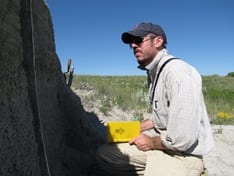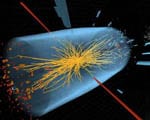The research of SMU fire anthropologist Christopher I. Roos was covered by the United Kingdom’s widely read newspaper The Guardian.
In his August 10 “Weatherwatch” column, “Hotter, drier summers may mean more forest fires,” science journalist David Hambling discussed the record-breaking megafires burning now in New Mexico and referenced new ancient fire research by Roos.
The study by Roos found that U.S. megafires in the U.S. Southwest region are unique and exceptional for the past 1,500 years.
Roos and co-author Thomas W. Swetnam, the University of Arizona, constructed and analyzed a statistical model that encompassed 1,500 years of climate and fire patterns to test, in part, whether today’s dry, hot climate alone is causing the megafires that routinely destroy millions of acres of forest.
The researchers found that even when ancient climates varied from each other — one hotter and drier and the other cooler and wetter — the frequencies of year-to-year weather patterns that drive fire activity were similar.
The findings suggest that today’s megafires, at least in the southwestern U.S., are atypical, say Roos and Swetnam. Furthermore, the findings implicate as the cause not only modern climate change, but also human activity over the last century, the researchers said.
EXCERPT:
By David Hambling
The Guardian
This year has been a bad year for forest fires in the US, with wildfires burning about eight hundred thousand hectares by the end of June. This is higher than average, in spite of the relatively low number of fires. But there may be worse to come.The Wildland Fire Assessment System maps the ‘Dead Fuel Moisture Level’ in the US. This indicates how much flammable wood there is on the ground, a critical factor in how fire spreads. There are several grades of fuel involved, ranging from “one-hour” twigs, which dry out or absorb moisture rapidly, to “thousand-hour” logs which only burn after a long dry spell. As drought deepens, the amount of dry fuel on the ground is growing, just waiting to ignite.
A recent study of tree-ring scarring looking back 1,400 years at Southern Methodist University, Dallas, suggests the current spate of forest fires is unusual. The pattern has remained similar, with wet years of growth followed by dry years of increased fires, but the scale of fires has changed.
In previous centuries minor fires were common, burning grasses but leaving trees standing. Twentieth-century forestry management prevented small fires, so brushwood built up, leading to fewer but more intense fires which destroy trees. Modern forestry policy encourages a natural ecosystem by allowing some fires, which is slowly improving matters. Meanwhile the series of hotter, drier summers may produce more and bigger forest fires than ever.
SMU is a nationally ranked private university in Dallas founded 100 years ago. Today, SMU enrolls nearly 11,000 students who benefit from the academic opportunities and international reach of seven degree-granting schools. For more information see www.smu.edu.
SMU has an uplink facility located on campus for live TV, radio, or online interviews. To speak with an SMU expert or book an SMU guest in the studio, call SMU News & Communications at 214-768-7650.



 Observed! SMU’s LHC physicists confirm Higgs ‘God particle’
Observed! SMU’s LHC physicists confirm Higgs ‘God particle’ DOE Award: advancing SMU’s link to the God particle
DOE Award: advancing SMU’s link to the God particle Ancient tree-ring records from southwest U.S. suggest today’s megafires are truly unusual
Ancient tree-ring records from southwest U.S. suggest today’s megafires are truly unusual Human diabetes has new research tool: Overfed fruit flies that develop insulin resistance
Human diabetes has new research tool: Overfed fruit flies that develop insulin resistance Modeling the human protein in search of cancer treatment: SMU Researcher Q&A
Modeling the human protein in search of cancer treatment: SMU Researcher Q&A